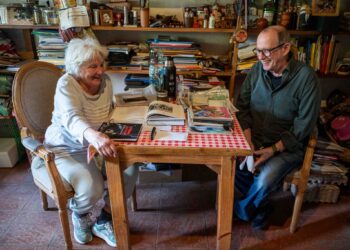Mercedes* had the first of her three children when she was under 20 years of age. By then she had already been working for a long time: for her, working life began when she was a teenager. A little over 5 years ago, in her 40s, the crisis in Venezuela pushed her to emigrate. She did so alone, with Peru as her destination. The plan was to support her family, which she left behind, from there.
In Peru, she did not find the conditions to settle down. In addition, she could not stand the distance from her children; so she decided to return to Venezuela to join her family and, 8 months ago, she emigrated again, this time on her way to the United States and with company. Leaving with her were her youngest daughter, 26, her son-in-law, 25, and their three children, ages 5 and 2, and an 8-month-old baby.
“We were desperate. We had work in Caracas, but it wasn’t enough to live on. The violence was also unbearable. We had nothing more to lose and we decided to undertake the journey,” says Mercedes, already in El Paso, in U.S. territory, at the Casa Sagrado Corazón, a temporary shelter for migrants where she and her family are recovering for a few days from the long journey.
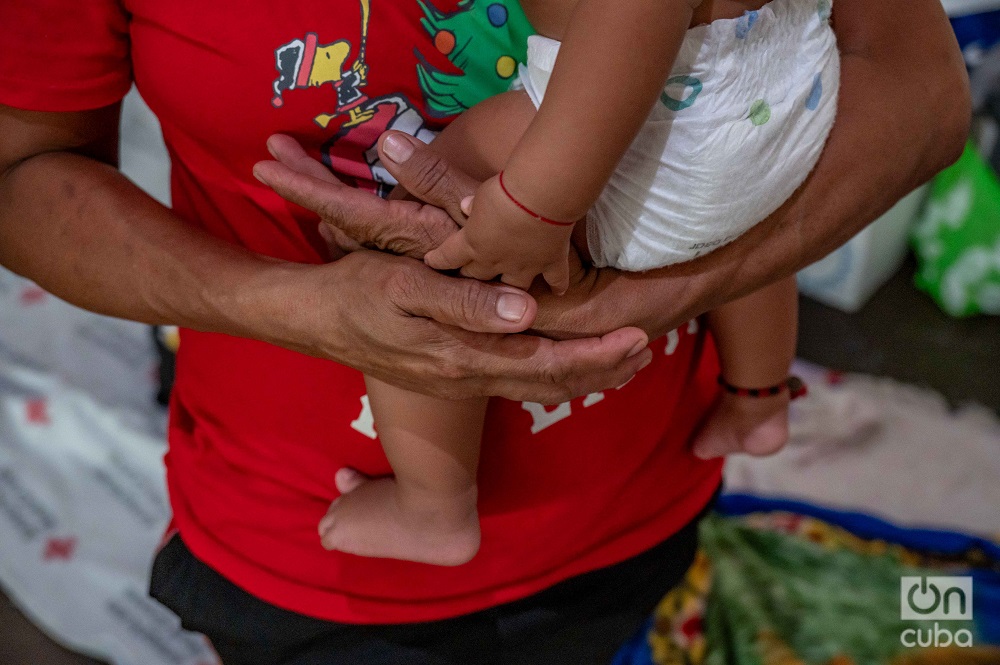
To reach the border between Mexico and the United States, they had to cross seven countries: Colombia, Panama, Costa Rica, Honduras, Guatemala and Mexico. Although the distance in a straight line from Caracas to El Paso is approximately 4,000 kilometers, the trip was much longer and more exhausting. For eight months, they traveled almost twice that distance, using various means of transportation and walking long stretches, crossing cities, towns, jungles and rivers. It was an arduous and dangerous pilgrimage.
Today, she celebrates that, despite everything, they are fine and were able to arrive; “because that trip was very hard. We saw others who were left behind. We saw very ugly things,” she confesses as someone who does not want to relive it even in her memory.
“We walked for entire nights. Sometimes the adults spent days without eating or bathing. I was terribly scared because of my grandchildren,” she says as tears well up in her eyes and a lump in her throat prevents any more words from coming out.

When crossing a river, the precarious boat they were traveling in capsized. The children almost drowned. “Thank God I know how to swim and I was able to rescue one of the children and get back on the boat. The other one held on to me tightly. Luckily we survived.”
Since 2021 alone, more than 855,000 Venezuelans have entered the United States through the border.
Evelyn and Mario* crossed Central America with their three children. They are housed in the same shelter, very close to the border with Mexico. The couple plays with the children, they cuddle them, they joke around with them and they burst out laughing. They all burst out with joy… It is impossible to imagine what the same family has gone through in recent months.
“They almost stole our youngest baby in Honduras. In Mexico, they offered to buy her from us. We were always alert and scared, without being able to trust anyone,” says the young mother.

“Going through the Darien jungle in Panama is nothing compared to crossing Mexico,” she says. Near the Mexican capital, she says, the police stopped them and extorted them. Then they took them to an area on the southern Mexican border and dumped them there. They had retreated more than a thousand kilometers, much of it walking for days and doling out money.
Carmen,* a Guatemalan woman in her 30s, made the trip alone with her young son. “It was traumatic,” she says. “I left Guatemala with my 2-year-old baby. They charged us $2,500 to take us to Mexico. In Ciudad Juárez they kidnapped us and demanded $8,000 to free us. They had locked us up and threatened to kill us. They only let me make one call to my parents in Guatemala to get the money. Thank God, they managed to scrape together the sum. They let us go. I don’t know how we managed to get out alive,” she says, looking at the child, who is playing near her.

Yurian and Alberto,* a Cuban couple who emigrated to Uruguay from Havana five years ago, decided to make the journey to the United States. The long journey from the southern cone to the border lasted three long months and cost them $30,000, including payment to coyotes, tickets, lodging, food…and a ransom: they were kidnapped on their way through Mexico.
They are now in Miami, waiting for the court date for the resolution of their asylum case. While they work 12 hours a day, they are in a hurry to generate any income possible. “We owe a great deal of the money we invested in the trip,” says Alberto.

“I still have nightmares about what we went through,” Yurian confesses. It was one scare after another. When we were about to reach the border, they kidnapped us, tied us up, and held us in a house with other migrants. They pointed a gun at us and shouted that if we didn’t pay $5,000 each, they would kill us. It was the second time that happened to us during the trip. The other time was when we entered Mexico. Every day I ask myself if it was worth taking all that risk. I don’t think so,” she says. Alberto nods in silence.

The final goal and a debt to pay
After a long and arduous journey, little Beatriz and Ainoa* spend the night in another of the temporary shelters for migrants, in El Paso, Texas. The 6-year-old girls have lived experiences that would mark any adult.
Beatriz is Venezuelan; Ainoa, Salvadoran. They arrived here after their families decided to escape the economic hardship and violence in their countries of origin. After weeks of traveling through Central America, the girls’ paths crossed at this point.

Beatriz enters the room and runs back and forth, between camp beds and taciturn people. The little girl excitedly heads toward a play area. Her long hair dances with each jump: the joy of discovering that little oasis of toys. My alien presence, and the camera hanging around my neck, suddenly catch her attention. Also near me was Ainoa, her new friend, who proudly told me the name she had given to each stuffed animal. Beatriz changed direction and in a few seconds was in front of us.
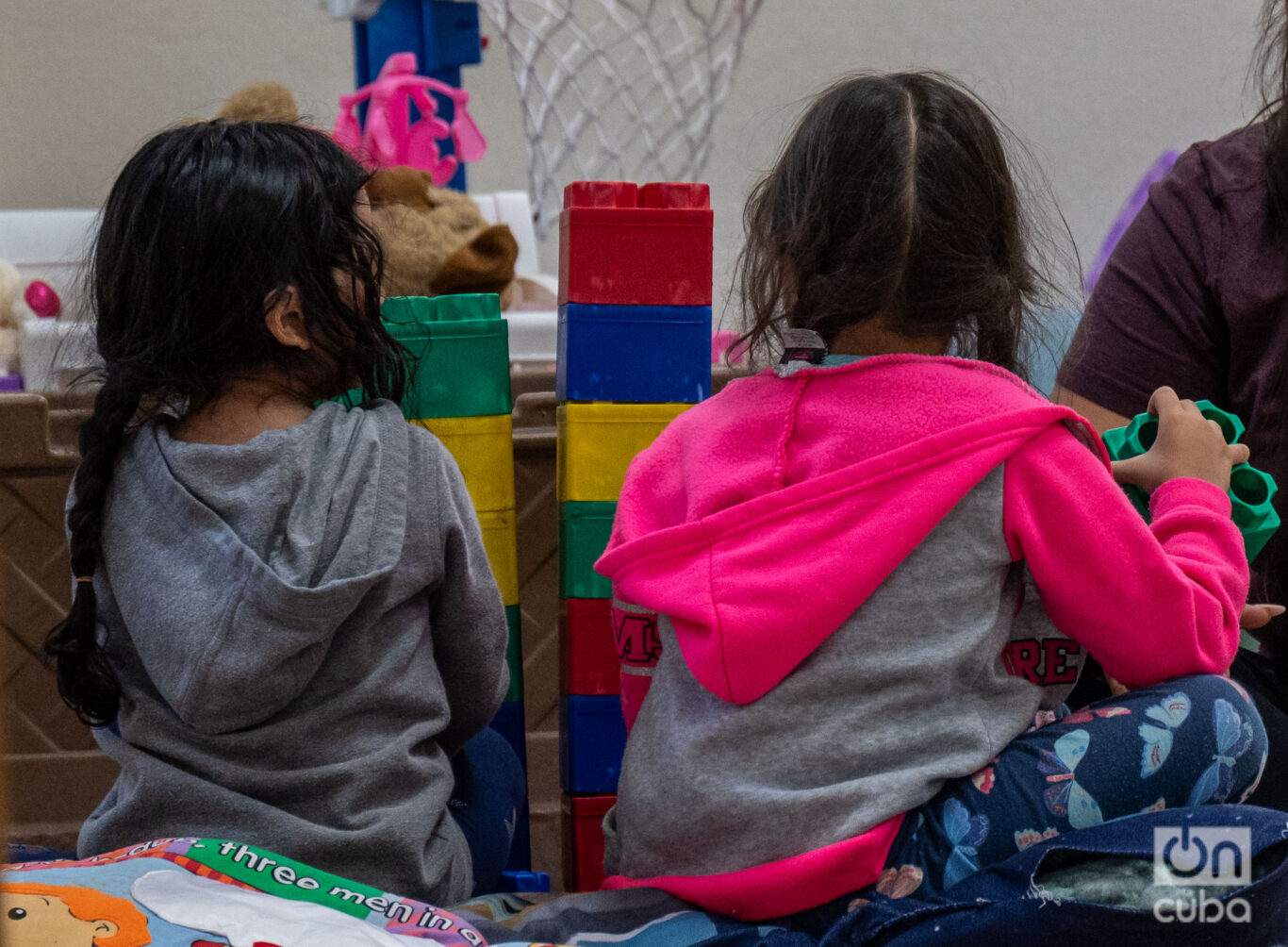
“Hello,” she said to me with shining eyes. Beatriz, who is no more than 1 meter tall, has three small windows in her smile, a sign of her missing teeth.
“I see that the little mouse left money for someone under the pillow,” I joked with her.
“No. When we get to the United States, he will wait for me with the money from all my teeth. Now he sends me pizza every time one of my teeth falls out,” she replied with implacable childlike logic, before sitting next to Ainoa and proudly showing that another tooth will soon add to her good fortune: “This one down here,” she points, “is already loose.”
Beatriz is already in the United States; but in the prime of her childhood, she does not understand that the goal of the migration route goes beyond the border. “The United States” for her is the final destination, and the shelter is not it.

Unaccompanied minors
In the odyssey of entering the United States illegally by land, Beatriz and Ainoa have been very lucky: they have never been alone. The girls crossed the border into the United States accompanied by their families and thus joined the number of almost 700,000 people who so far have arrived in the country as part of a “family unit” this fiscal year, according to demographic data from the U.S. Border Patrol (USBP) and the Office of Field Operations (OFO).
However, not all the children are so lucky. Border Patrol statistics describe them as unaccompanied minors. So far in 2024, more than 50,000 of them, under the age of 17, have been found in the middle of the jungle or desert, facing an uncertain fate.

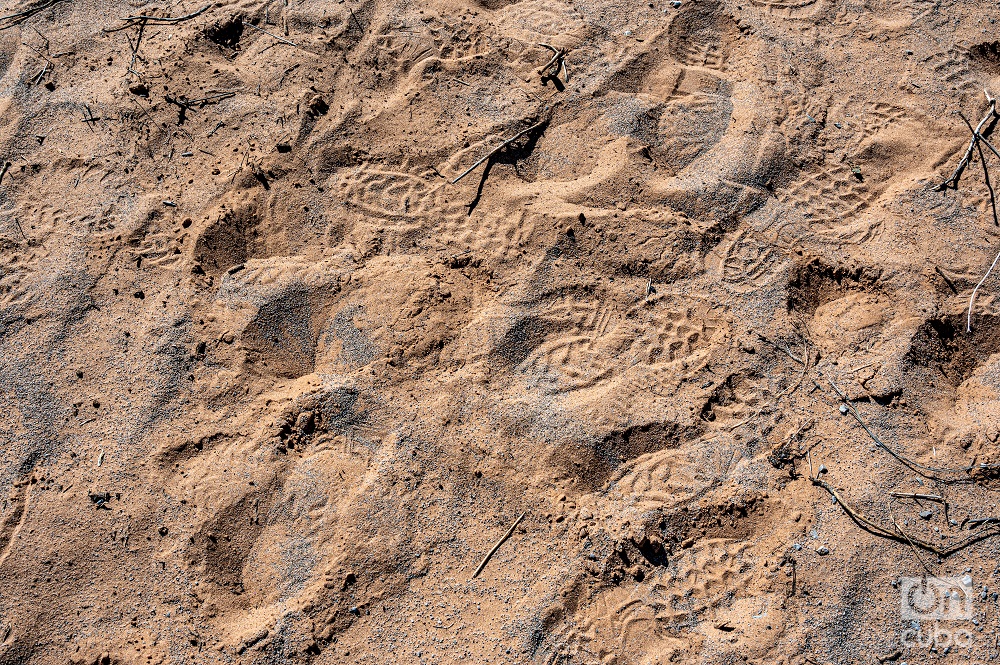
Most unaccompanied migrant children or teenagers come from countries such as Guatemala, Honduras, El Salvador, Mexico and Venezuela, which are facing economic, social and security crises. However, child migration is not limited to Latin America. Minors have been recorded from places as far away as Romania, Turkey and even China.
Cuba has seen a significant increase in the number of unaccompanied minors, with nearly 800 cases reported so far in 2024. In this same period but in 2023, 300 had been rescued.

As a rule, minors cover the journey with their parents or other relatives. It is near the border where they usually separate to cross, either by jumping the fence in the desert or crossing the Rio Grande. One of the reasons why some parents send their minor children alone or with other groups is the false belief that with them in U.S. territory it will be easier to grant asylum for the older family.

The arrival of unaccompanied minors increased when the Biden administration implemented the policy known in Spanish as “Quédate en México” (Remain in Mexico), which consisted of making asylum seekers wait there for the resolution of their cases. There were exceptions with unaccompanied minors who were allowed to enter the United States and remain in the country due to their vulnerability, often increased by the lack of documents.
When found, many of these children and teenagers carry a telephone number written on their clothes, back, or arm; the only information to contact one of their parents or a close relative residing or not in the United States.

Last July in the Rio Grande sector, Border Patrol rescued two Honduran brothers, just 3 and 5 years old, after crossing the border line. They were alone.
Minors under 17 years of age who cross without the company of an adult or who do so with a group of people that do not include their parents or legal guardians and are found by the Border Patrol, must be transferred within the first 72 hours to the Department of Health and Human Services.

This agency is responsible for placing them in children’s homes or facilities appropriate to their needs, with the main objective of finding a family member or responsible adult who can care for them while their case is processed in the Immigration Courts.
Despite this exception, current immigration legislation in the United States does not provide differential treatment to migrant children compared to adults. As a result, minors are not guaranteed access to a lawyer or child advocate to represent them during their proceedings before immigration authorities and Immigration Courts.
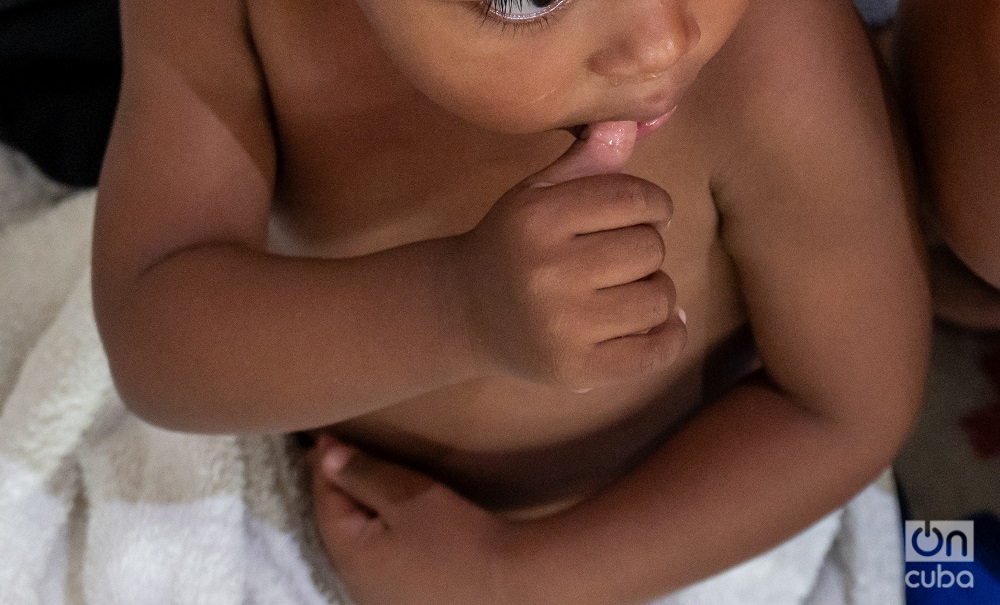
Father Rafael García
No one chooses where they are born, but they do choose where they can be useful. Such is the vocation of the Jesuit Father Rafael García.
When he was just 9 years old, in 1963, García, his mother, and his brother left Cuba for the United States. The family settled in Miami, a city where the Cuban presence was already strong.
Sometime later, Rafael studied architecture; but after a few years of working as an architect, he discovered that his true vocation was in another type of construction: that of faith and support for those most in need. When he was 30 years old he left behind plans and calculations to continue dedicating his life to religious service.
In 1983 he began the path to priesthood and, a decade later, he was ordained. Almost thirty years ago he was named pastor of the Jesuit parish of Sagrado Corazón, in El Paso, Texas, a few blocks from the border with Ciudad Juárez, Mexico.
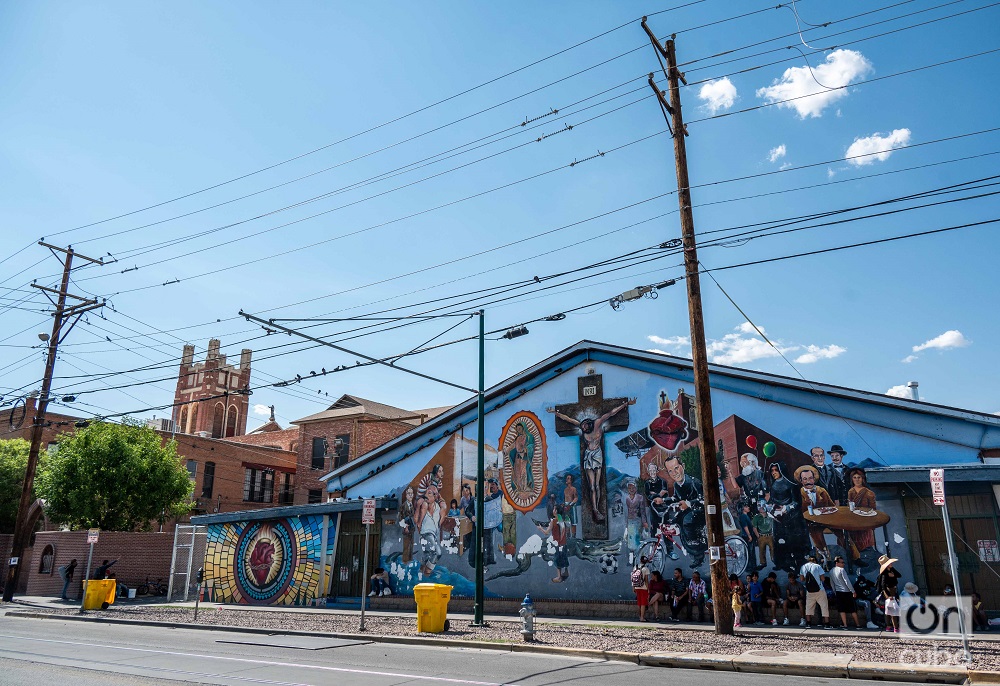
The Sagrado Corazón parish church, founded in 1893 by Father Carlos M. Pinto, an Italian Jesuit missionary, is the most emblematic building in El Paso’s Second Ward and one of the oldest Catholic churches in the city. Since its inception, it has been a spiritual and educational pillar for the immigrant community — mainly Mexican — and a symbol of hope for those seeking to belong as newcomers to the country.
Father García served in this church for thirteen years. Then his duties took him to other states until he returned to El Paso in 2016.
Since then, he has dedicated himself to pastoral care at the Immigration and Customs Enforcement (ICE) detention center and worked in two residential detention centers for unaccompanied minors, providing spiritual and emotional support to immigrants in vulnerable situations.
In 2020, his commitment was again recognized when he was named pastor of Sagrado Corazón parish church, which allowed him to continue supporting those who need it most.
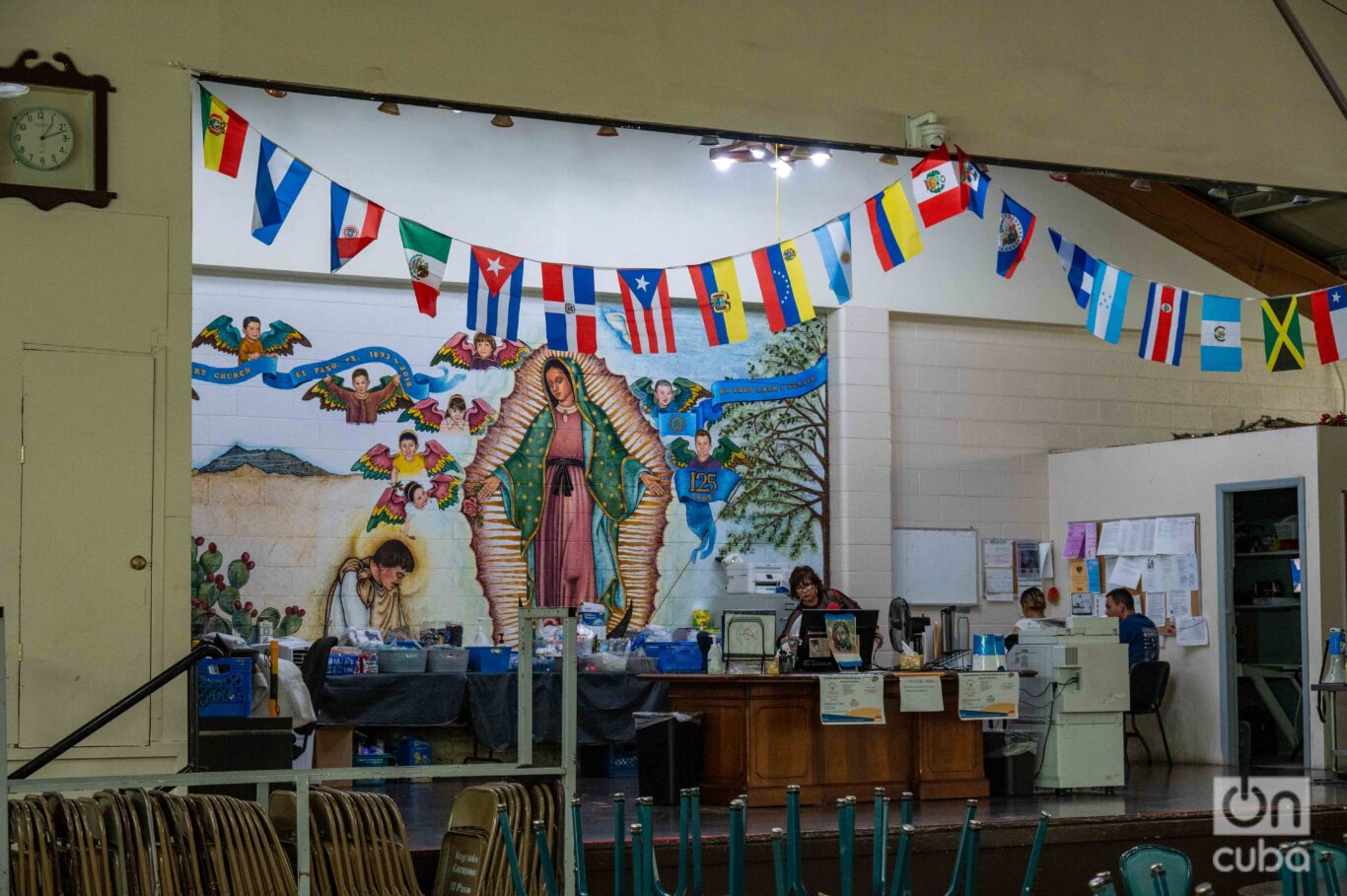
“The world is small. I came to the United States as a child, as a refugee, with my mother and my brother. What I experienced as a child I now see every day in other people. I can understand the difficulties that these good people go through, and it is much worse than what I suffered. It is a priority for the Church and for us to care for the most vulnerable people, and migration is one of the strongest and most painful realities,” reflects Father García.
His dedication was put to the test in December 2022, when a wave of migrants arrived in El Paso. Hundreds of desperate people went to the Jesuit parish in search of help. Faced with the emergency, the priest did not hesitate to open the doors of a nearby gymnasium, improvising a shelter with the scarce resources available.
On December 12, after celebrating mass in honor of Our Lady of Guadalupe, García announced the creation of a temporary shelter for migrants in the same building; it would be called Casa del Sagrado Corazón.

“There were many families with small children. The city’s shelters were saturated. More than a thousand people were staying around our church alone. It was very cold,” the priest recalls about those days in December 2022.
With the help of volunteers who offered to cook for the new arrivals and organize them, the shelter began to take shape. Thanks to donations from other parishes and caring people from all over the United States, the shelter was equipped with bathrooms, mattresses, toiletries, and food. A group of advisors was also formed to guide migrants through their bureaucratic procedures.

The shelter currently can house 120 people, but in critical moments it has taken in up to 200 migrants.
“Something very beautiful, paradoxical and even biblical is that we receive a lot of help from the neighbors. Statistically, this neighborhood is one of the poorest in the entire United States. In other words, the poorest neighborhood is the one that opens up to the neediest people. That doesn’t happen in other areas, where attempts have been made to open other shelters and the neighbors are against it.”
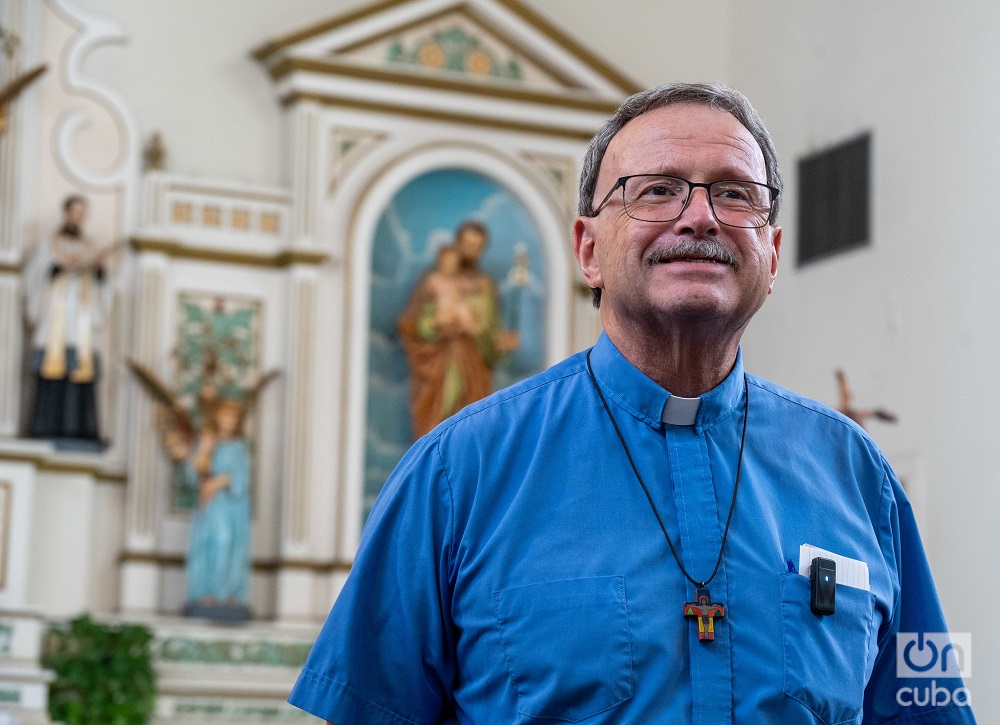

At the Casa Sagrado Corazón, every day is a challenge and a learning experience. Father García faces confessions that go beyond the usual, he hears stories of trauma and abuse, kidnapping, torture, extortion and rape. “Kidnappings are very sad and a reality that has existed for years,” he says indignantly. “What migrants go through on their journey, especially when crossing through Mexico, is terrible. It is known that many women are raped, one or more times, along the way.”
Despite the harshness and frequency of these testimonies in the voices of those who suffer or suffered, García confesses that he receives more than he gives. “Love is lived in giving and receiving,” he says. Through migrants “I have confirmed my true vocation in life,” he says.
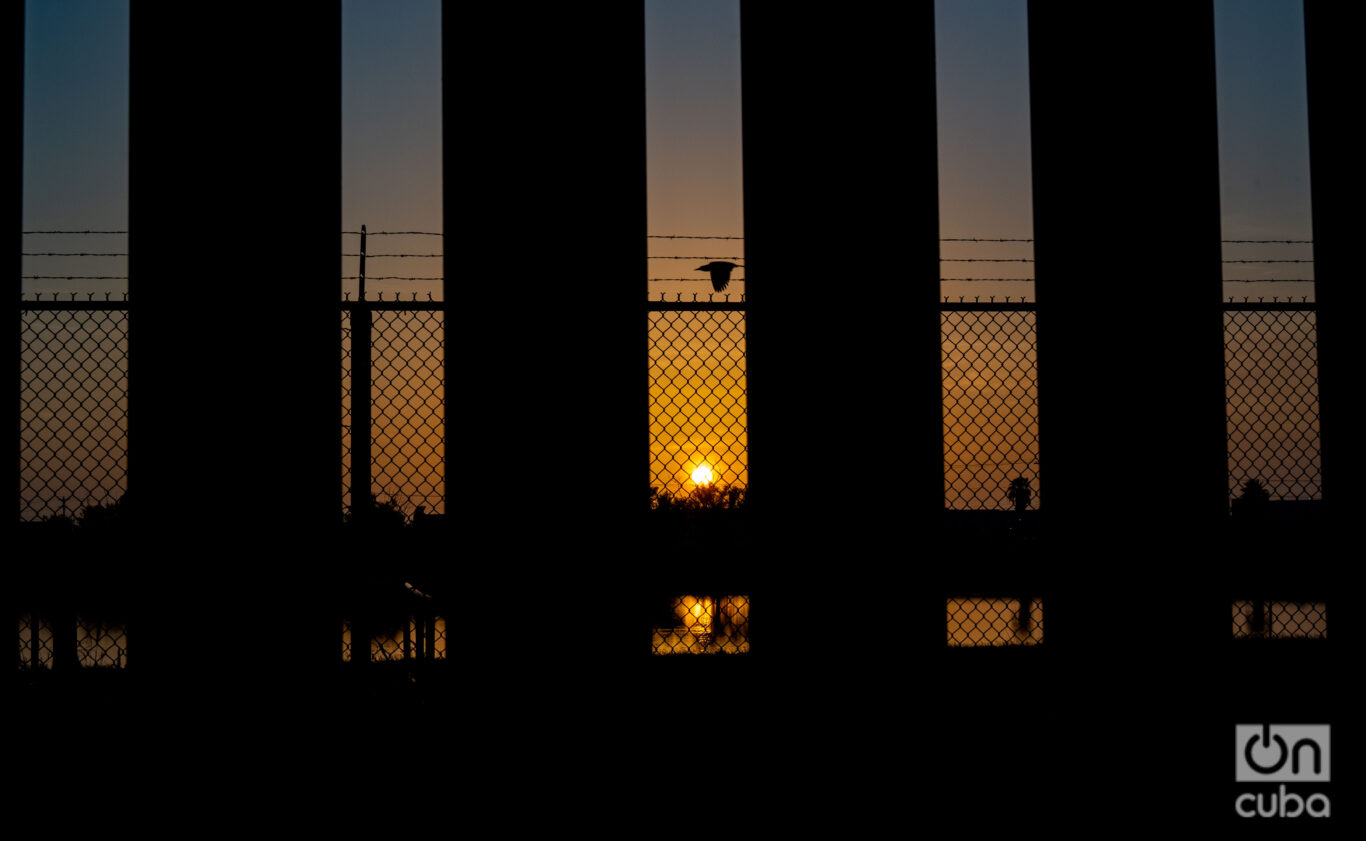
*For privacy reasons, the real names of the testimonies have been changed.
See the first installment of this series here.










